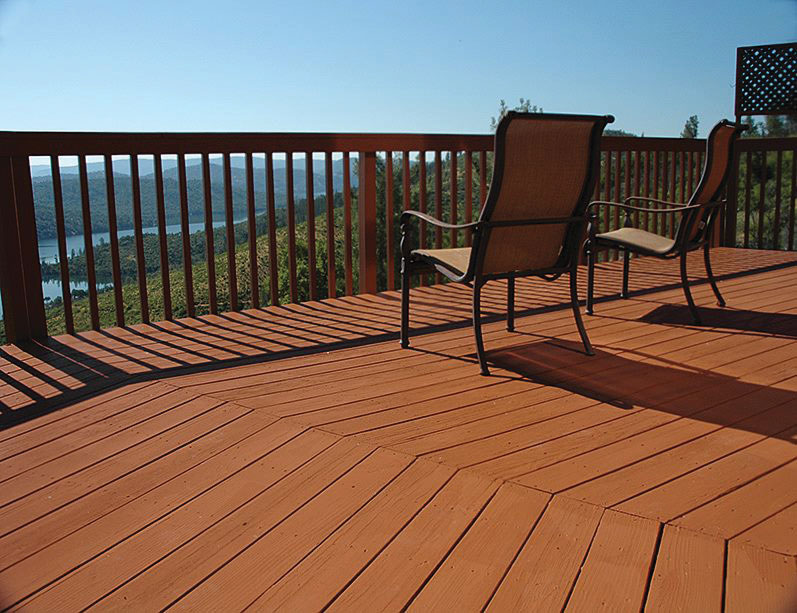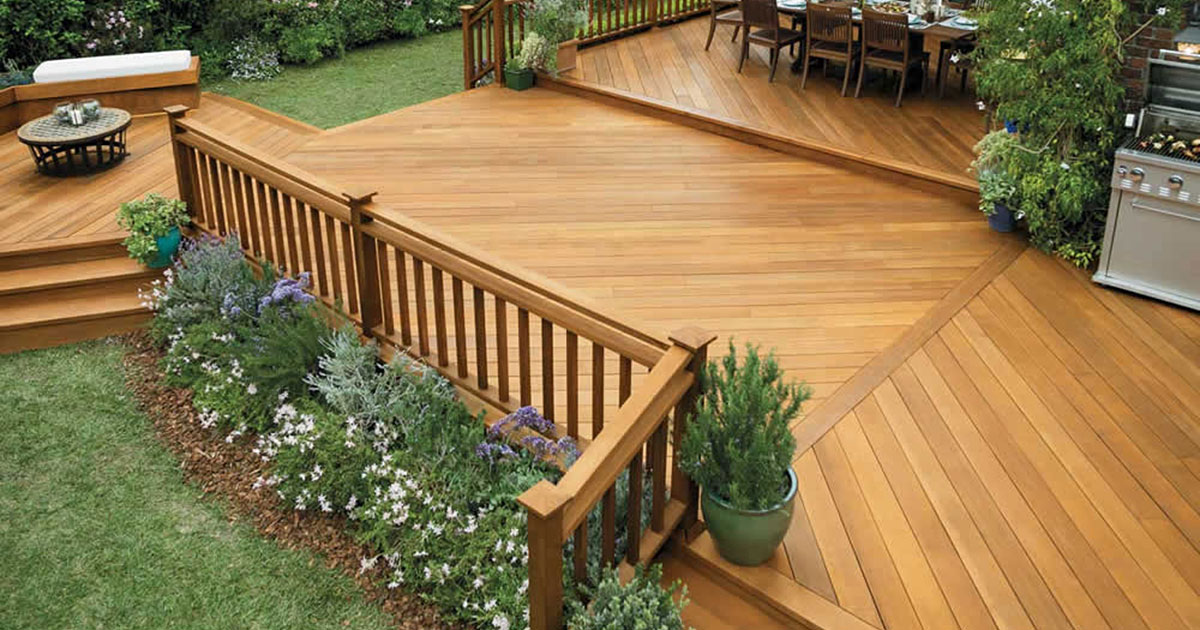A Comprehensive Guide to Different Sorts Of Deck Staining Techniques for Ultimate Protection and Aesthetics
In the realm of deck maintenance, the art of discoloring stands as a critical step towards both protecting the stability of your outdoor room and boosting its aesthetic appeal. As we navigate via the intricate world of deck discoloration strategies, one starts to value the nuanced approaches that can make all the distinction in between a sub-par surface and a perfect one. From the choice of the ideal stain type to the meticulous application methods, each facet plays an essential function in attaining that perfect equilibrium between protection and aesthetics. Join us as we discover the keys behind attaining the ultimate deck discoloration results-- a trip where every brushstroke shapes not just the surface area, yet the extremely essence of your exterior shelter.
Understanding Various Sorts Of Spots
Numerous types of spots are frequently made use of in the procedure of deck staining to attain various aesthetic and protective impacts. On the other hand, semi-transparent stains use an equilibrium in between color improvement and protection, allowing some wood grain to reveal via.
Furthermore, there are also specialized stains such as toners and sealers. Toners include a tip of shade to the timber while providing minimal protection, making them appropriate for newer decks with less wear. Sealers, on the other hand, offer security against wetness and UV rays without including color, making them a prominent option for decks that already boast a desirable hue. Comprehending the qualities and benefits of each type of stain is important for accomplishing the preferred appearance and longevity for your deck.
Choosing the Right Discoloration Shade
When taking into consideration the looks of your deck staining project, the selection of discolor color plays an essential role in enhancing the safety high qualities of the selected tarnish kind (Chicago Deck Staining). The color you choose can significantly influence the general appearance of your deck, in addition to its ability to hold up against the components over time
When choosing a tarnish color, it's necessary to consider the existing color pattern of your home's exterior. Balancing the deck stain with the total aesthetic of your property can develop a cohesive and aesthetically attractive outdoor area. Additionally, the shade of your deck discolor can affect the temperature of the deck surface area; darker shades tend to take in even more warm, while lighter colors reflect sunshine and remain cooler.
Furthermore, the kind of wood you are discoloring will certainly additionally affect exactly how the tarnish color appears. Different timber species can engage with the tarnish in various methods, possibly modifying the final color. It's suggested to test the discolor on a little, inconspicuous area of the deck to guarantee the shade ends up as desired before waging the whole task.
Preparing Your Deck for Discoloration
To make sure a long-lasting and successful deck staining task, thorough prep work of the deck surface area is crucial. Begin by cleansing the deck completely to eliminate dirt, grime, mildew, and any kind of old tarnish or complete.
Examine the deck for any type of damaged or rotten boards that need to be changed. Hammer down any type of extending nails and sand any type of rough locations to make certain a smooth surface area for staining. Check for any kind of loosened railings or steps that might require tightening or visit this site repair.
As soon as the deck is tidy, dry, and in excellent fixing, take into consideration using a wood brightener to restore the deck's all-natural color and open up the timber pores for much better tarnish penetration. Shield any neighboring plants, furniture, or surfaces with plastic sheeting before proceeding with the staining process. Correct preparation is crucial to attaining a professional-looking coating and optimizing the longevity of your deck discolor.
Using Stain With Numerous Methods
For a specialist and flawless surface, the approach of using tarnish plays a crucial function in boosting the look and sturdiness of your deck. There are numerous strategies you can utilize to ensure an efficient application of tarnish.
It is optimal for complex areas and reaching between deck boards. Back-brushing after rolling is advised to also out the discolor and work it into the wood for better infiltration.
Spraying is another prominent technique, supplying speed and convenience of application, particularly for large deck locations. Whichever technique you pick, making sure proper prep work and complying with manufacturer standards will assist achieve a attractive and lasting tarnish surface on your deck.

Preserving and Re-staining Your Deck
Appropriate upkeep and timely re-staining are important for preserving the elegance and long life of your deck. Routine maintenance jobs consist of sweeping debris, cleansing with a deck cleaner, and evaluating for any type of indications of wear or damage. Resolving problems without delay can protect against a lot more considerable troubles in the future. When it involves re-staining your deck, the frequency depends on different elements such as the kind of tarnish utilized, the environment in your location, and how much damage your deck experiences. Normally, it is recommended to re-stain your deck every 2-4 years to preserve its defense and appearances.
Prior to re-staining, make certain the deck is clean, completely dry, and cost-free of any type of previous internet discolor deposit. Pick a top quality discolor that suits your deck's product and gives the wanted level of protection.
Final Thought
Finally, understanding the various kinds of deck discolorations, selecting the appropriate shade, correctly preparing the deck, applying discolor with numerous methods, and re-staining the deck and maintaining are crucial actions for ultimate defense and aesthetic appeals. By complying with these steps, you can ensure that your deck continues to be in leading problem for years to find.
Additionally, the shade of your deck discolor can influence the temperature of the deck surface; darker shades often tend find this to take in even more warm, while lighter shades reflect sunlight and remain cooler.
It's suggested to check the tarnish on a little, inconspicuous location of the deck to ensure the color turns out as desired before proceeding with the whole project.
